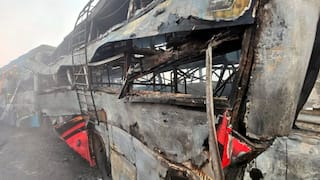Who Was Capt Archibald Blair? The British Naval Surveyor Port Blair Was Named After
Port Blair, now Sri Vijaya Puram, was named after Archibald Blair, a Lieutenant in the Bombay Marine and British officer, who served in the Royal Navy during the 18th century.

Port Blair, the main entry point of the Andaman and Nicobar Islands and the capital of the Union Territory, will now be known as 'Sri Vijaya Puram'. Known back for its picturesque beaches and the infamous 'Kala Paani' or Cellular Jail, Port Blair has its history deeply rooted in colonial legacy. Ever wondered about the origin of the name Port Blair? The city was named after Archibald Blair, a British officer who served the Royal Navy in the early 18th century.
The 'Blair' In Port Blair
A naval surveyor and a Lieutenant in the Bombay Marine, Archibald Blair was the first officer to conduct a survey of the Andaman Islands.
He received his first commission at the Bombay Marine in 1771 and 21 years later was promoted to the rank of a captain. His dedication to exploring and carrying out survey missions landed him at Port Blair, which eventually turned into a strategically important region for the Britishers, transforming it into a key node in their maritime network.
In 1772, Blair embarked on his maiden survey mission along the coasts of India, Iran, and Arabia. However, he was captured by a French man off the Cape of Good Hope in 1780. After being held prisoner for four years, he was handed over to the Dutch in 1784, who further returned him to Bombay Marine.
In the next two years between 1786 and 1788, Blair undertook several survey missions as part of which he explored Chagos archipelago, Hooghly River, and also the Diamond Harbour south of Kolkata. By this time, Blair had already conducted a thorough survey of the Andaman Islands and even written a detailed report on it. This detailed report was received well by the Britishers, who then decided to colonise the Andamans in a meeting of the British governor-general in Council on June 12, 1789.
In 1788, Blair set out on his first survey voyage to the Andamans, which was completed in April 1789. He had departed from Calcutta in December 1788 with two ships named Viper and Elizabeth. During this expedition, he proceeded southwards along the west coast of the main islands, rounded Rutland Island, and then sailed along the eastern coast. This was where he discovered the natural harbour that he named Port Cornwallis after British-Indian Navy Commader-in-Chief Commodore William Cornwallis. Later, it was renamed after him.
Realising the significance of the port, he hoisted the British colours and sailed to return to Calcutta on April 22, 1789 to submit a report, which was welcomed by the East India Company officials.
It was then that the Company decided to colonise the islands, primarily to establish a safe harbour to keep a check on the Malay pirates. It was also meant to serve as a place where officers could take shelter and shipwrecked people could seek refuge. Although there were no plans to turn it into a penal colony, it gradually became one after some convicts were taken along as unpaid labour.
However, the government ordered its removal and relocation to a new Port Cornwallis in Northern Great Andaman in December 1792, which did not turn out to be successful due to diseases and unhealthy conditions. The port was handed over to Major Kyd in March 1793, who was asked to abandon it three years later.
The Revolt of 1857 resulted in multiple prisoners for the British. This prompted the resettlement and renovation of Port Blair as a penal colony. The convicts mostly received life imprisonment and death sentences. However, many died due to diseases.
Blair's work was considered exceptionally trustworthy and accurate. He returned to England in 1795 and is recorded to have read an account of the Andaman Islands before the Royal Society in London in 1799. He retired in 1800 and settled in Hertfordshire.






































